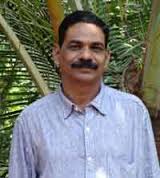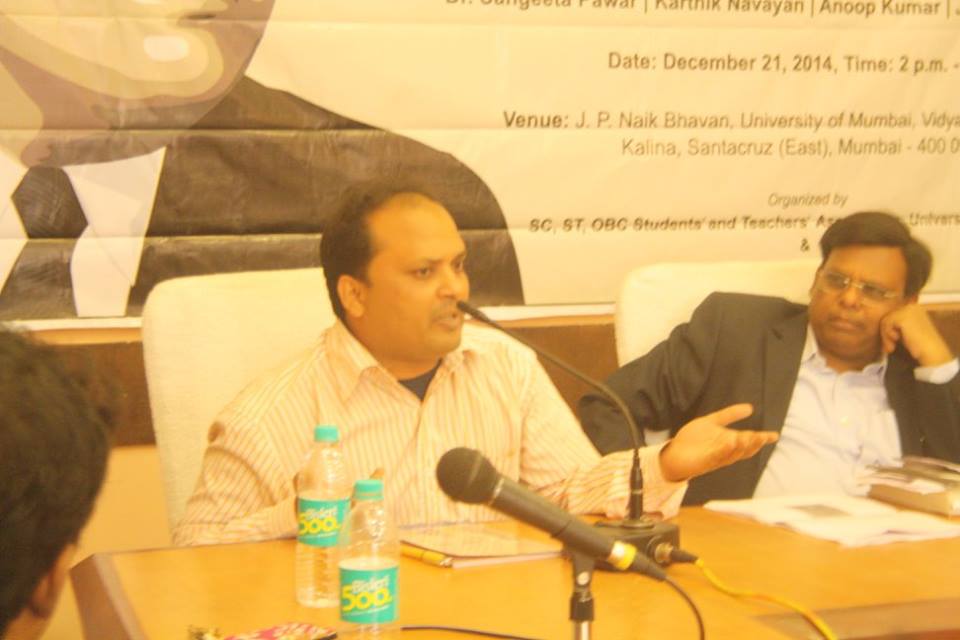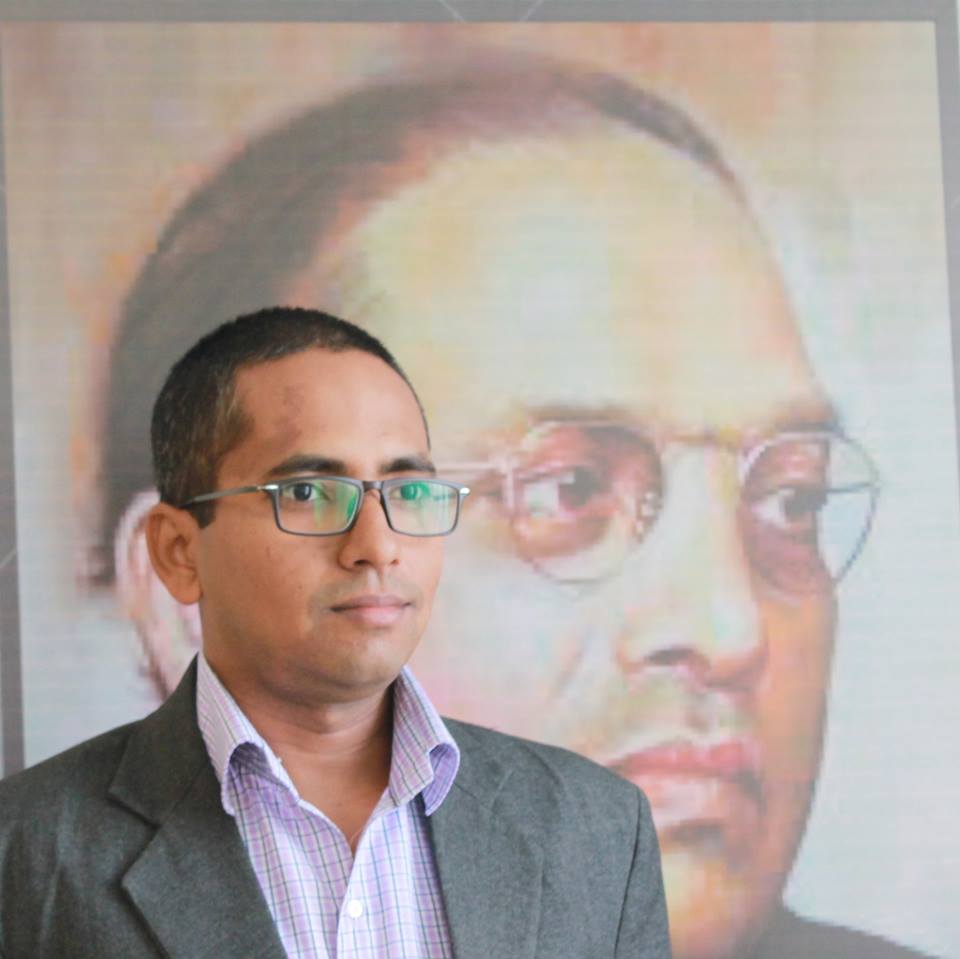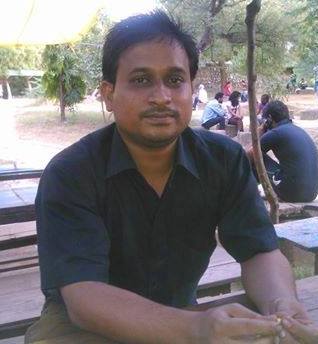K K Baburaj
 When a great personality dies, people feel helpless and the country ceases to function. But, after one week, if this great personality returns, he won’t find the job of a city porter. The famous German poet Bertolt Brecht wrote such a poem.
When a great personality dies, people feel helpless and the country ceases to function. But, after one week, if this great personality returns, he won’t find the job of a city porter. The famous German poet Bertolt Brecht wrote such a poem.
Kalabhavan Mani, a Dalit film star and popular singer in Kerala, who passed away on 6th March 2016 was never included in the list of great personalities. Even though the news of his death was heart breaking for many, making them feel that they lost a beloved brother or a dear friend. Perhaps, Mani acquired greatness in a different way than the “great” personality in Brecht’s poem. The responses received from different sections of people show that his afterlife will be strange and unique.
Prominent Bahujan feminist writer Jenny Rowena observes that, the cultural scenario of Indian cinema revolves around a figure of a “moralist savarna male”.1 The twists and turns of cinema as well as the story depends on his characterization. The other characters are portrayed and controlled as per the wishes of this central figure. In these films low class men & women occupy the ‘other’ space after the hero, an equally powerful anti-hero and the very obedient heroines.
These films place them in such a way as very loyal servants, who obey whatever their master says, even bear the master’s scoldings and physical harassments. Also s/he should be portrayed as a person with childish behavior, as a person who shows over-sexuality or asexuality and who creates fear or temptations for “moralist savarna women’s” repressed desires. On the whole, we might feel they hold the same position as the hero-anti hero-heroine trio, but they don’t. They are always placed outside the main playing space. Even though the films never clearly indicate the castes of these characters, it’s known to everyone that they are Dalits, OBCs and Muslims.
Most of the characters, given to Kalabhavan Mani by Malayalam cinema are of the same Dalit/subaltern male which was described as above. But what makes him different is he crossed all such boundaries and became a popular hero and a prominent singer.
Some turns happened in the cultural discourses in Kerala during the mid-1990. In that period, “Kathaprasangam” (an art of storytelling) and professional dramas were almost abandoned in programs conducted in clubs, temple grounds and anniversary celebrations in schools and colleges. That space was taken by mimicry and stage shows. Many reasons can be cited for the abandonment of Kathaprasangam and professional drama, which helped a lot to create awareness about different social affairs and human emotions among common people, of which, globalization and the emergence of new social sections can be seen as important.

The status of NRIs who migrated after globalization was different from the older generation. Professionals who were ‘conditioned’ in changed situations, professional/partly professional working ladies instead of old homemakers, and children who got educated in foreign lands never bothered about their hometown’s ‘liberal movements’ and ‘progressive cultural values’. They loved the 2-3 hours stage shows filled with dance, music, comedy, fun and extravaganzas of colors. Thus mimicry became the most sensational item in this type of stage shows which was clubbed with the support of TV channels and innovative technologies.
Mimicry artists mainly consisted of people belonging to Latin Christian, Muslim, Dalit and other backward communities; a few belonged to the forward communities. Even now, mimicry is not considered an elite art form. Mani, who was born in a poor Dalit family in Chalakkudy took up mimicry, which is given a secondary or tertiary value in the cultural space of Kerala. Mani, who became an auto-rickshaw driver – after he failed in the 10th standard – contacted “Cochin Kalabhavan” through some friends and underwent training for mimicry and stage shows.
‘Kalabhavan’ is not an elite institution like Kalamandalam. It is a center in Kochi developed for the cultural capital formation of Latin Christian communities. Lots of Latin Christian, Muslim young people came out from this center after learning basic lessons of Mimicry, Music and Direction. These bunch of young people gave a new face to hero based Malayalam films and introduced many popular trends. They brought back Malayalam films which were based in Trivandrum and Madras to Kochi and its surrounding places. Apart from that, they made a genre of “comedy films” which are mixed with all the popular trends.
The collapse of the so-called “pure” and “progressive values” helped Mani, who came from a Dalit background, to rise as a popular star. These bunches of young people had a structure, which destabilized the old fears of casteism. When those who belonged to different castes and religions came together on the subaltern platform of Mimicry, there happened the chemical process of ‘mixture’, as demanded by the post-modernism in Kerala.
Mani, who was doing mimicry and acted in some comedy films during that time, registered his face in the minds of Malayalam family audience. In 1998, he along with Manju Warrier did a television dance music show on the Vishu day. This program, which was an astonishing hit in the history of Malayalam television, somehow made ‘mixture’ a postmodern cultural medium.
In the program, Manju Warrier and Mani dance for his own song “Kannimanga prayathil” which shows the blending of Dalit-Savarna, Black-White, Men-Women, paving the way for new audio-visual discourses. But the main turning point of this ‘blending’ is that it created a space for the visualization, sound modulation and movements of an assertive Dalit body for the first time.
Kumaran Asan’s ‘Duravastha’ (stage of deprivation) is considered as a literature which portrays the liberal attitudes of Keralites. The Dalit man in that poem, gets addicted to the cultural assets of the Brahmin lady he loves. This makes him isolated from his own family and community. Because of his relationship with the Brahmin lady, he studies Hindu mythologies, Vedas and Upanishads and becomes a cultural high class product. Later, liberal and even leftist thoughts continued this normalization in portraying the cultural and moral life of subaltern communities as value-less and thereby isolating their existence. Mani, through his societal and regional-Dalit identity and organic realization made the caste fixation weak. The background of postmodern cultural discourses and the newly formed Dalit-Adivasi movements in Kerala also made this thing much easier.
The thing to be noticed here is, Mani never confined himself inside mimicry. He always lightened up his soul by helping the poor, while he was moving economically forward.
What new thing Mani’s Dalit life made which is different from the rest of pre-structured subaltern models?
Like many writers pointed out, Mani through his voice and presence created a philosophical understanding and prestige for the Dalit, Dravidian, Bahujan Cultural trajectories. Mani’s songs signify a new collective formation for the community, societal knowledge, pleasure and distress related feelings of people who belong to the lower sections of society. The savarna collective unconscious saw the subaltern masculinity as ‘violent’ or ‘untouchable’. But Mani had the open self-consciousness to throw away such racial constructions and became everyone’s ‘Manichettan’ (elder brother). But for this, he neither sanskritized his Dalit identity nor neutralized it by showing any liberalistic attitude. Conversely, he transformed his Dalit identity as a two-way communication channel to reach others and for others to reach him.
Jean-Michel Basquiat, an Afro-American artist, wove the street culture of America and the isolated lives of people including blacks in his paintings. bell hooks “re-members” his art and paintings in a write-up titled ‘Altars of Sacrifice’. Mani reminds us of Basquiat. In Kerala, where caste dominance and hierarchy rules all the sections, which includes the celebrity field, the signs, hopes and cultural streams added by Mani got vanished. As a versatile personality he never received what he deserved. Many actresses refused to act with him. But he confronted such denials using ‘Love as an action for freedom’ (bell hooks).2 That’s why we feel Mani’s life and death is an ‘immolation’.
Criticisms are heard that many films in which he acted indirectly encourage caste violence and rebuild the victimization and isolation of Dalits. But everyone agrees that Mani always tried to destabilize the pre-structured models. He did different roles in many films which include appreciable anti-hero roles in Malayalam, Tamil, Telugu and Kannada movies. Along with that, he did many hero roles too. Even though, most of them are typical roles, they helped him a lot to overcome portraying the roles of ‘isolated’ characters to an extent. Earlier he gained popularity among the lower divisions of Dalit and Muslim community.
Well known Dalit poet S. Joseph suggested that: don’t unanimously take the argument that the subaltern characters portrayed by Mani depict only victimization and animalization. According to his view, “most of the Malayalam actors including super stars follow some high level acting procedure. But Mani did an open acting which is really contrary to this. He performed genuinely when enacting the roles of suppressed subaltern characters. It’s not easy to transform into a person, monkey or buffalo that is brutally attacked”. S.Joseph adds that, while Mani did perform the character of a blind person, it created a value for differently abled people, and his songs should be understood as poems which have a contemporary social background rather than merely being folk songs.3
The real sabotage is that the oppressed, despised and ridiculed body of Mani comes out from the border of “Dalit-humiliation”. This created a self-consciousness among the poor and marginalized people along with the Dalits, Backward communities and Minorities that they also have an existing space and values.
The reactions from different sections of the society, the crowd flow to his house after and during his funeral and still continuing condolence meetings indicates that; Mani entered into a new life after death, which was not expected by the political-intellectual society here. This means, there are lot more people with us like Mani and they are still continuing their efforts, sufferings and struggles.
Translation: Sreekutty S
~
References
1. Themmadikalum Thampurakkanmarum (Malayalam- Film study) (Jeny Rovena -Subject and Language Press, Kottayam, 2011).
2. Mani Nammude Koodapirappu (S.Joseph-www.Uthakaralam.com 7-3-2016)
3. Outlaw Culture : Resisting Representations (Bell Hooks- Routledge – 2006)
~~~
K K Baburaj is a writer, social critic and Dalit activist based in Kerala.










